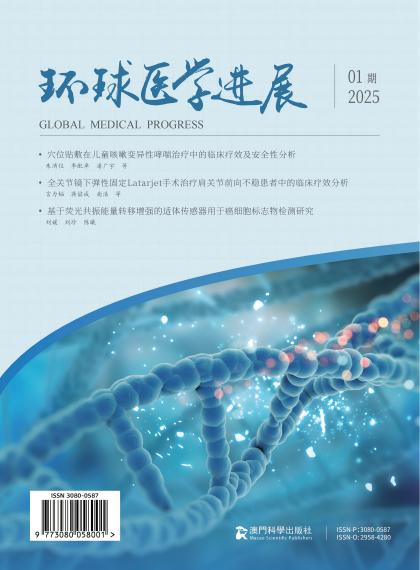摘 要:
目的:基于荧光共振能量转移(FRET)增强的适体传感器在癌细胞标志物检测中的应用价值与检测效果,为精准早期诊断提供新策略。方法:本研究选取2023年3月—2025年3月期间收治的100例经病理证实的恶性肿瘤患者外周血样本,依据癌细胞特异性标志物表达水平分为高表达组(50例)和低表达组(50例)。采用设计合成的FRET增强适体传感器体系对对典型肺癌细胞标志物CEA进行检测,并与传统ELISA方法进行对照,比较其灵敏度、特异性与检测限等性能指标。结果:FRET增强适体传感器在肺癌细胞标志物检测中展现出较高的灵敏度(检测限低至0.5 ng/mL)与良好的特异性,阳性检出率分别为高表达组92.0%、低表达组76.0%,显著优于ELISA方法(P<0.05)。检测时间明显缩短,信号响应稳定性良好。结论:基于FRET增强的适体传感器在肺癌细胞标志物的检测中具有灵敏度高、特异性强、操作简便等优势,具备良好的临床推广前景,尤其适用于早期筛查和疗效监测。
关键词:荧光共振能量转移;适体传感器;肺癌细胞标志物;生物检测;早期诊断
Abstract:
Objective: To explore the application value and detection efficacy of FRET-enhanced aptamer sensors in cancer cell marker detection, providing new strategies for precise early diagnosis. Methods: This study selected peripheral blood samples from 100 patients with malignant tumors confirmed by pathology between March 2023 and March 2025, divided into high-expressing (50 cases) and low-expressing (50 cases) groups based on tumor-specific marker expression levels. The designed FRET-enhanced aptamer sensor system was used to detect the lung cancer cell marker CEA, with traditional ELISA method as control, comparing performance metrics including sensitivity, specificity, and detection limit. Results: The FRET-enhanced aptamer sensor demonstrated high sensitivity (low detection limit down to 0.5 ng/mL) and excellent specificity in lung cancer marker detection, achieving positive detection rates of 92.0% for high-expressing group and 76.0% for low-expressing group, significantly better than ELISA methods (P<0.05). The detection time was notably shortened with stable signal response. Conclusion: FRET-enhanced aptamer sensors exhibit advantages such as high sensitivity, strong specificity, and ease of operation in lung cancer marker detection, showing promising clinical application prospects, particularly suitable for early screening and therapeutic monitoring.
Keywords: Fluorescence resonance energy transfer; Aptamer sensor; Lung cancer cell markers; Biological detection; Early diagnosis
--
